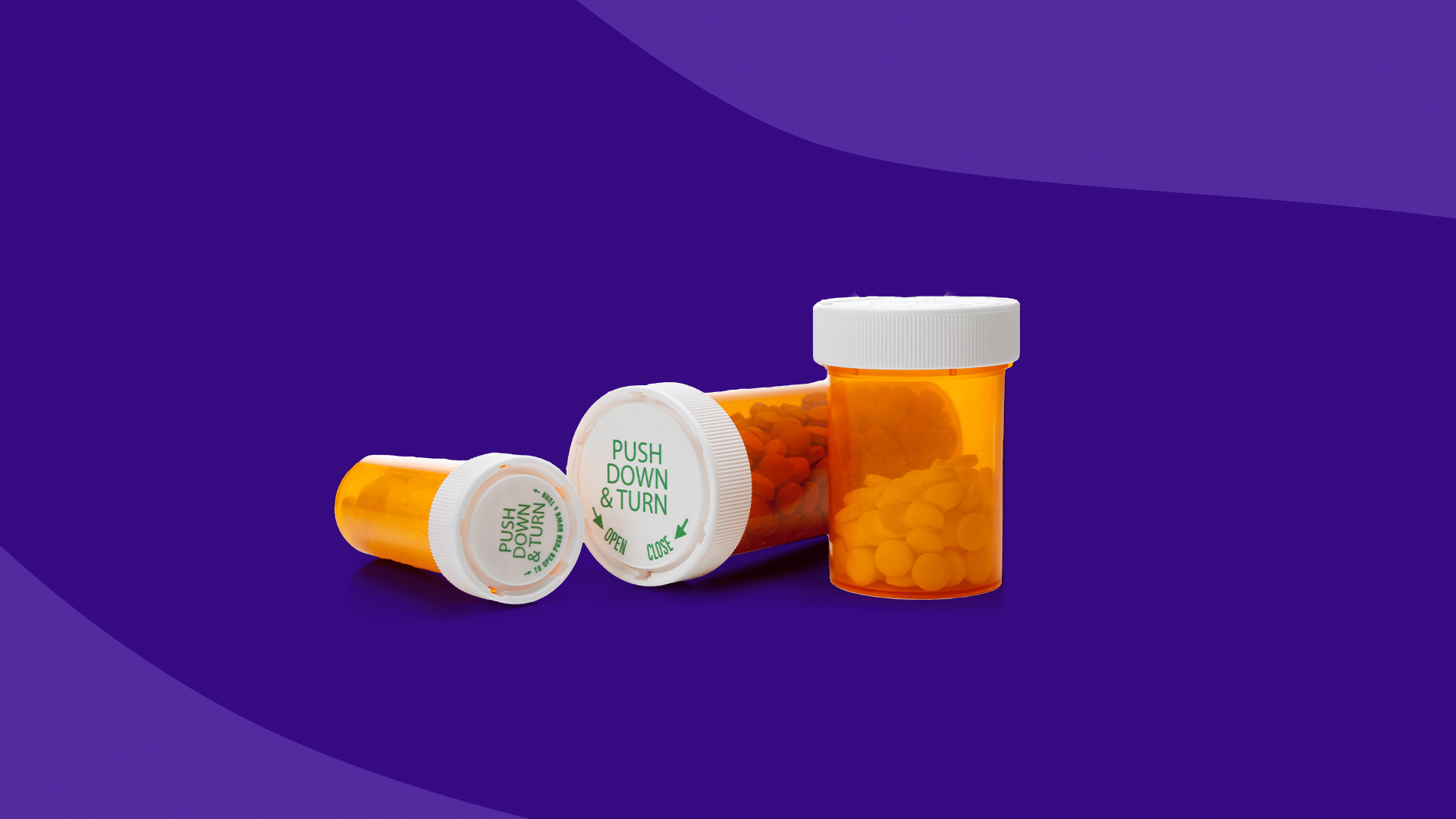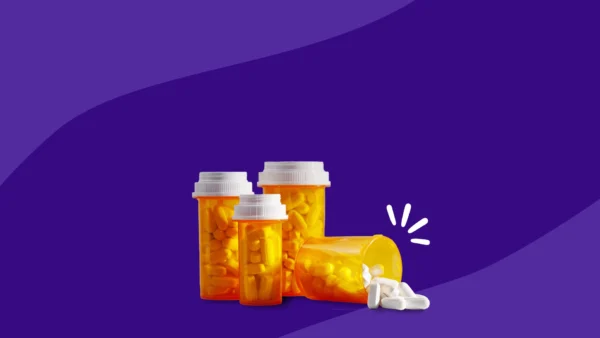Compare sulfasalazine alternatives | Actemra | Enbrel | Humira | Methotrexate | Remicade | Natural alternatives
If you have rheumatoid arthritis or ulcerative colitis, you may have heard of a drug called sulfasalazine. Sulfasalazine is the ingredient and generic version of the brand-name prescription drug, Azulfidine, which is made by Pfizer. Sulfasalazine is used for the following conditions:
- To treat mild to moderate ulcerative colitis (UC), which is a type of inflammatory bowel disease (IBD)
- To treat severe UC, in combination with other medication(s)
- To lengthen the time between UC attacks (flare-ups)
Azulfidine EN-tabs are another formulation that contains delayed-release, enteric-coated sulfasalazine. Sulfasalazine delayed-release tablets can treat the conditions listed above. In addition, sulfasalazine delayed-release tablets can treat patients with rheumatoid arthritis (RA) who have not responded to or cannot tolerate other medications. This drug can also treat children with polyarticular-course1 juvenile RA who have not responded to other medications.
Sulfasalazine is part of a drug class called disease-modifying anti-rheumatic drugs (DMARDs), more specifically, it is an aminosalicylate. It works to treat these autoimmune conditions by decreasing inflammation in the body. It is approved by the U.S. Food and Drug Administration (FDA).
In some cases, patients may be looking for an alternative treatment option to sulfasalazine. Some people may not have the desired effect and want to try a different medication to see if it works better. Others may have side effects that persist or are bothersome. Common side effects of sulfasalazine include:
- Abnormal liver function tests
- Appetite loss
- Blood in the urine
- Crystals in the urine which can cause stones or kidney problems
- Cyanosis (blue skin due to poor circulation)
- Dizziness
- Fever
- Headache
- Hemolytic anemia (a condition where red blood cells are destroyed faster than they are made)
- Leukopenia (low white blood cell count, which can interfere with the body’s ability to fight infection and increase the risk of infection)
- Low sperm count
- Sensitivity to the sun
- Skin rash/itching/hives
- Stomach problems like pain, nausea, vomiting, and indigestion
- Swelling and sores in the mouth
Or, a serious side effect could occur, such as seizures, low blood sugar, infections, problems with the lungs, liver, kidneys, or pancreas, or severe or life-threatening allergic reactions or skin reactions.
Some people cannot take sulfasalazine at all. According to the prescribing information, sulfasalazine is not approved for use in:
- Patients with an intestinal or urinary blockage
- Patients with a condition called porphyria
- Patients who are allergic to sulfasalazine, mesalamine, sulfa drugs, or salicylates
If you are looking for a different medication, there are several alternatives to sulfasalazine that you can discuss with your healthcare provider.
What can I take in place of sulfasalazine?
There are other options available to treat UC or RA symptoms that do not improve with sulfasalazine, or when sulfasalazine cannot be tolerated. The table below compares sulfasalazine (in bold), with common alternatives. All of the drugs listed are prescription medications that are approved by the FDA.
Compare sulfasalazine alternatives |
|||
|---|---|---|---|
| Drug name | Uses | Dosage | Coupons |
| Sulfasalazine | Ulcerative colitis (UC)
(Delayed-release can be used for UC and rheumatoid arthritis (RA) |
Varies; the maintenance dose for adults is 2 grams per day | Sulfasalazine coupons |
| Actemra (tocilizumab) injection | RA
Giant cell arteritis Systemic Sclerosis-Associated Interstitial Lung Disease (SSc-ILD) Polyarticular Juvenile Idiopathic Arthritis (PJIA) Systemic Juvenile Idiopathic Arthritis (SJIA) Cytokine Release Syndrome (CRS) |
Varies by indication | Actemra coupons |
| Asacol (mesalamine) oral | UC | To treat active UC: two 400 mg tablets 3 times daily for 6 weeks
To maintain remission of UC: 1.6 grams daily in divided doses |
Asacol coupons |
| Celebrex (celecoxib) oral capsule | Osteoarthritis (OA)
RA Juvenile Rheumatoid Arthritis (JRA) Ankylosing Spondylitis (AS) Acute pain Primary dysmenorrhea |
Varies; for RA the dose is 100 or 200 mg by mouth twice daily | Celebrex coupons |
| Cimzia (certolizumab pegol) injection | Crohn’s disease
RA Psoriatic arthritis AS Axial spondyloarthritis Plaque psoriasis |
Varies by indication. For RA: 400 mg initially and again at week 2 and week 4, then 200 mg every other week | More details |
| Colazal (balsalazide) oral | UC | Adults: 2.25 g (three 750 mg capsules) three times daily for 8 to 12 weeks | Colazal coupons |
| Enbrel (etanercept) injection | RA
JIA Psoriatic arthritis AS Plaque psoriasis |
Varies
For RA: 50 mg once weekly with or without methotrexate |
Enbrel coupons |
| Humira (adalimumab) injection | RA
Juvenile idiopathic arthritis (JIA) Psoriatic arthritis AS Crohn’s disease Ulcerative colitis Plaque psoriasis Hidradenitis suppurativa (HS) Uveitis |
Varies by indication | Humira coupons |
| Imuran (azathioprine) oral | RA
Prevents rejection after kidney transplant Off-label for Crohn’s disease or UC |
Varies by indication | Imuran coupons |
| Lialda (mesalamine) oral | UC | Adults:
To induce remission, the dose is 2.4 to 4.8 grams once daily To maintain remission, the dose is 2.4 grams once daily |
Lialda coupons |
| Methotrexate injection or tablet | RA
PJIA Severe psoriasis Certain cancers Off-label for Crohn’s disease |
Varies;
For RA: 7.5 to 15 mg by mouth or injected weekly; given with folic acid or leucovorin |
Methotrexate coupons |
| Mobic (meloxicam) oral | OA
RA Juvenile Rheumatoid Arthritis (JRA) in patients who weigh ≥60 kg (132 lb) |
For RA: Starting dose is 7.5 mg once daily; may be increased to 15 mg once daily | Meloxicam coupons |
| Plaquenil (hydroxychloroquine) oral | RA
Malaria Lupus |
RA: Initial dose is 400 to 600 mg daily
Chronic dose is 200 mg once or twice daily or 400 mg once daily |
Plaquenil coupons |
| Prednisone oral (steroid) | Many indications for various inflammatory conditions; including
RA AS Psoriatic arthritis |
Varies; general dose is 5 to 60 mg daily | Prednisone coupons |
| Remicade (infliximab) injection | Crohn’s disease
UC RA (with methotrexate) AS Psoriatic arthritis Plaque psoriasis |
Varies by indication | More details |
| Rowasa (mesalamine) enema | UC
Proctosigmoiditis Proctitis |
One rectal instillation daily at bedtime, and retained for 8 hours; for about 3 to 6 weeks | Rowasa coupons |
| Stelara (ustekinumab) injection | Crohn’s disease
UC Psoriatic arthritis Plaque psoriasis |
Varies by weight and indication | More details |
Other alternatives to sulfasalazine
- Apriso (mesalamine) oral: for UC
- Asacol HD (mesalamine) oral: for UC
- Delzicol (mesalamine) oral: for UC
- Pentasa (mesalamine) oral: for UC
Top 5 sulfasalazine alternatives
1. Actemra
Actemra is an injection that contains the ingredient tocilizumab, which can be given intravenously (into a vein over a one-hour period) or subcutaneously (as an injection under the skin).
Actemra is in a drug class called interleukin-6 (IL-6) receptor antagonists. It is also known as a biologic. Actemra can be used for:
- Adults with moderate to severe RA who have not responded to other medication(s)
- Adults with giant cell arteritis
- Adults with systemic sclerosis-associated interstitial lung disease
- Patients 2 years and older with polyarticular juvenile idiopathic arthritis or systemic juvenile idiopathic arthritis
- Adults and children 2 years and older with cytokine release syndrome
The most common side effects of Actemra are headache, injection site reactions, high blood pressure, upper respiratory tract infections, common cold, and increased liver function tests.
Actemra has a black box warning, which is the most serious warning required by the FDA. The warning states that Actemra can cause serious infections that can lead to hospitalization or death. These infections may include tuberculosis (TB), or other bacterial, viral, or fungal infections. If a serious infection occurs, Actemra should be stopped until the infection is controlled. Before starting Actemra, patients should be tested for TB, and treated if the test is positive. During treatment, patients should be monitored for TB.
2. Enbrel
Enbrel is an injection. It contains the ingredient etanercept, which is given subcutaneously every week.
Enbrel is in a drug class called tumor necrosis factor (TNF) blockers. It is also a biologic.
Enbrel can be used for:
- RA
- Psoriatic arthritis
- Ankylosing spondylitis
- Plaque psoriasis (adults and children 4 years and older)
- Polyarticular juvenile idiopathic arthritis (in patients 2 years and older)
Common side effects of Enbrel include injection site reactions and infections.
Enbrel has the same black box warning as Actemra. Additionally, the black box warning states that lymphoma and other malignancies (cancers), some of which have caused death, have occurred in children and adolescents who have taken TNF blockers.
3. Humira
Humira is an injection and contains the ingredient adalimumab, which is given subcutaneously every week or every two weeks.
Like Enbrel, Humira is in a drug class called tumor necrosis factor (TNF) blockers. It is also a biologic. Humira can be used for:
- Moderate to severe RA in adults
- Juvenile idiopathic arthritis in patients 2 years and older
- Psoriatic arthritis in adults
- Ankylosing spondylitis in adults
- Moderate to severe Crohn’s disease in adults and children 6 years and older
- Moderate to severe ulcerative colitis in adults and children 5 years and older
- Plaque psoriasis in adults
- Moderate to severe hidradenitis suppurativa in patients 12 years and older
- Uveitis in adults and children 2 years and older
Common side effects of Humira include injection site reactions, headache, rash, upper respiratory infections, and sinus infections.
Humira has the same black box warning as Enbrel. Additionally, the black box warning states that a rare type of T-cell lymphoma, called hepatosplenic T-cell lymphoma, has occurred in adolescents and young adults with inflammatory bowel disease who were treated with TNF blockers.
4. Methotrexate
Methotrexate is available in both oral and injection forms.
Methotrexate is in a drug class called dihydrofolate reductase inhibitors. Oral methotrexate can be used for:
- Adults and children with acute lymphoblastic leukemia
- Adults with mycosis fungoides
- Adults with non-Hodgkin lymphoma
- Adults with RA
- Adults with severe psoriasis
- Pediatric patients with polyarticular juvenile idiopathic arthritis (pJIA)
Injectable methotrexate can be used for RA, pJIA, psoriasis, and several times of cancers.
The most common methotrexate side effects are nausea, stomach problems, low white blood cells, and ulcers in the mouth. Folic acid supplementation should be given to lower the risk of side effects from methotrexate.
Methotrexate has a black box warning. This drug can harm an unborn baby, and may cause death. Methotrexate should not be used for non-neoplastic (non-cancer) diseases in pregnant women. Women of childbearing age should be educated about the risk to an unborn baby and should speak to their healthcare provider about using effective contraception. People who are allergic to methotrexate should not take this drug. Methotrexate can cause serious reactions, including death. Patients who take this drug should be closely monitored for bone marrow, stomach, lungs, kidneys, skin, and liver problems.
5. Remicade
Remicade is an injection that contains the ingredient infliximab, which is given intravenously every six to eight weeks, depending on the indication.
Remicade is a TNF blocker and a biologic. It can be used for:
- Crohn’s disease in adults and children 6 years and older
- Ulcerative colitis in adults and children 6 years and older
- RA in adults (in combination with methotrexate)
- Ankylosing spondylitis in adults
- Psoriatic arthritis in adults
- Plaque psoriasis in adults
The most common side effects of Remicade are headache, infusion-related reactions, upper respiratory tract infections, sinus infections, sore throat, and stomach pain.
Remicade has the same black box warning as Humira.
Related: Remicade vs. Humira
Natural alternatives to sulfasalazine
If you are experiencing RA, you may be wondering if there is a natural alternative to sulfasalazine. While supplements do not replace prescription medications, there are some vitamins and supplements that may help improve symptoms. Before taking any vitamin or supplement, though, consult your healthcare provider.
- Folic acid: Many people who have RA take a drug called methotrexate, which can deplete folic acid levels. When taking methotrexate, supplementation with folic acid will be necessary. Folic acid will also help reduce some of the side effects of methotrexate.
- Calcium and vitamin D: It’s important to get enough calcium and vitamin D if you have RA and you also have bone loss. Steroids, such as prednisone, which are sometimes prescribed for RA, can also cause bone loss, making it important to supplement with calcium and vitamin D. Your healthcare provider can look at the results of your blood tests and recommend an appropriate dosage to take.
- Omega-3 fatty acids (fish oil): These supplements may help improve RA symptoms, such as joint pain, morning stiffness, and swollen joints.
- CBD: While it may be tempting to hop on the CBD bandwagon, consult your healthcare professional before trying this natural product. Although there are no clear guidelines on CBD and arthritis, medical experts with the Arthritis Foundation remind patients that there is little data on CBD use in patients with arthritis. There are also potential drug interactions to be aware of. CBD, like other supplements, should never be used in place of prescription medicine. Patients who want to try CBD should start with a low dose, increasing slowly if needed. Patients should purchase CBD from a reputable business that has each batch evaluated for purity, safety, and potency by an independent lab, and has a certificate of analysis.
Again, these vitamins or supplements are not a substitute for medication, but rather a potential complement to the medication. Talk to your healthcare professional about various natural methods you can try, in combination with your medications. Always check with your healthcare provider for medical advice before trying an herbal supplement, as some may have drug interactions or dangerous adverse effects.
How to switch to a sulfasalazine alternative
If you are interested in switching to a sulfasalazine alternative, you can:
- Contact your insurance provider if the price is a concern. Ask which sulfasalazine alternatives are covered in your formulary, and what the copay would be for each medication. Be sure to ask if your deductible has been met, or if you are still paying towards your deductible.
- Reach out to your healthcare provider. You may be asked to make an appointment to talk about your medication regimen. You can review your medical conditions and history, and discuss alternative medications—as well as potential side effects and drug interactions—with your healthcare provider. If your provider decides to prescribe a sulfasalazine alternative, they can send the prescription to your pharmacy. Tell your pharmacist that you are switching from sulfasalazine to the new medication, so they can update your file.
- Search SingleCare for coupons. SingleCare customers save up to 80% on prescription prices, and the coupons can be applied to refills, too.











